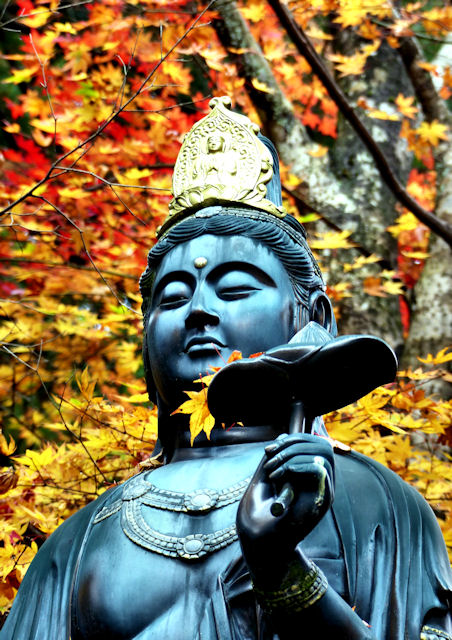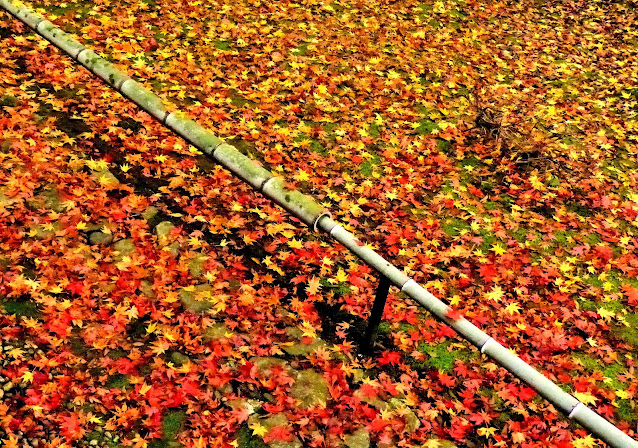Mid morning I reached Chomeiji temple number 31 on the pilgrimage, and it was a riot of color
A little further on in Omihachiman at Himure Hachimangu they were preparing for some kind of fire festival later that evening. Unfortunately I wouldnt be able to stay for it.
I took the ropeway up to the top of Hachimanyama and found more color among the ruins of the castle there.
I finished walking this section of the pilgrimage early and headed back to Hikone. In the grounds of the castle there this guy was obviously enjoying the view.
The Genkyuen garden next to the castle was, as expected, a blaze of color






























































